Can farmed fish meet the world's appetite for seafood?
- Published
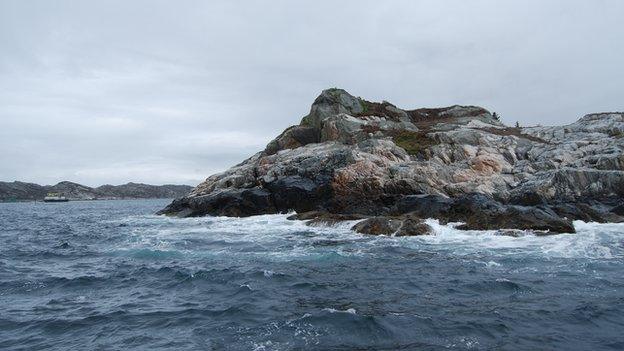
The rocky coast of Sotra
With increasing pressure on global fish stocks, is farming fish the best way to meet the growing global appetite for protein?
Norwegian Knut Magnus Persson doesn't travel far to get to work. He steps out of his home on the island of Sotra, perched on the western coast of Norway, and forages straight from the sea.
Knut dives for scallops, crabs and even seaweed, which he supplies to just a few customers. He also makes a living from farming shellfish in the clear waters of the Norwegian fjord which he lives next to with his young family.
His nine-year-old daughter is following in his footsteps - putting out crab pots and then selling what she catches to the chef of a restaurant in nearby Bergen.
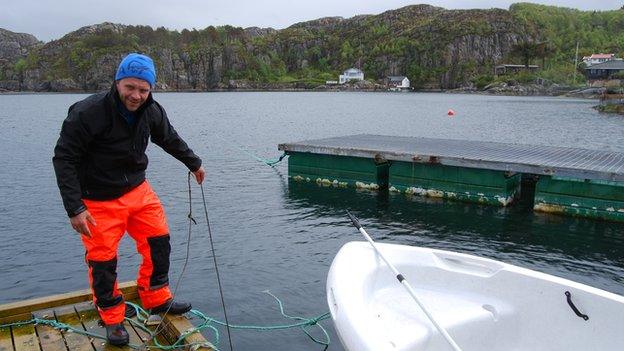
Knut and his daughter forage straight from the sea
A generation ago Knut's way of life would not have been unusual, but declines in wild fish stocks and the rise of fish farming are changing the fishing industry here in Norway as in many other coastal nations.
And here the delicate balance between meeting mass market demand and supporting livelihoods seems to be working.
So could the Norwegian model of carefully controlling wild fishing, while expanding fish farming, be one other countries should follow?
Controversial farming
The amount of wild fish we can get from the sea is limited - 90% of the world's wild fish stocks are already at capacity or over-fished. Yet demand for seafood is forecast to increase.
Norway is among the countries embracing aquaculture and is the world's leading producer of farmed Atlantic salmon.
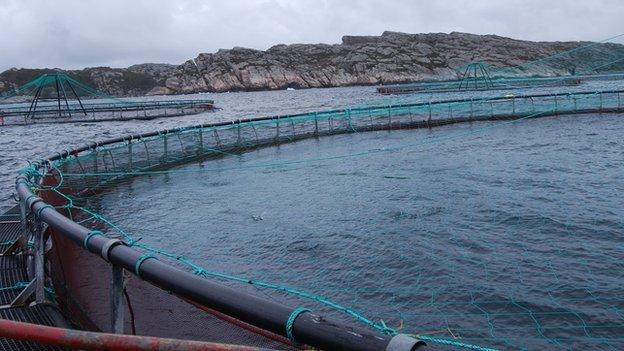
The fish are farmed to maturity in giant pens
Fish farm manager Odd Kallestad has run a salmon farm off the most westerly point of Norway's coast for the world's biggest producer of farmed Atlantic salmon, Marine Harvest, for the past 17 years.
He makes a daily boat journey to the floating farm headquarters, to the 10 huge fish pens where one million fish will be farmed to maturity.
But fish farming is a controversial business. Environmental problems - such as waste products in the local waters and escapes of farmed fish into the wild population - are among the concerns.
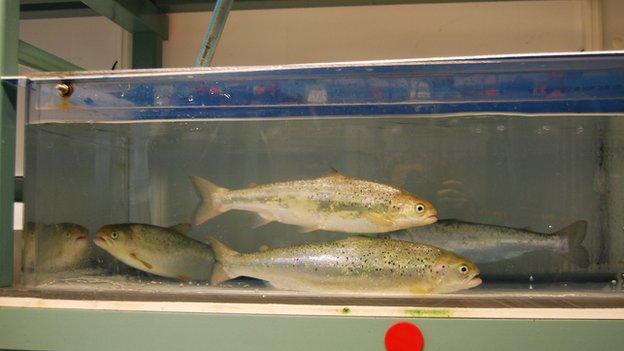
Fish farming has its critics

Fish facts
Although 70% of the planet is ocean, only about 2% of the world's food supply comes from the seas
The World Bank estimates that by 2030, some 62% of the seafood we eat will be farm-raised
Globally, fish provides more than 2.9 billion people with almost 20% of their intake of animal protein

By far the biggest issue for salmon grown in Norway is sea lice infestation. The sea louse is a common parasite that moves between farmed and wild stocks, but is found in much higher numbers where fish are penned together for farming. Lice can harm the salmon and damage the wild fish population if allowed to get out of control.
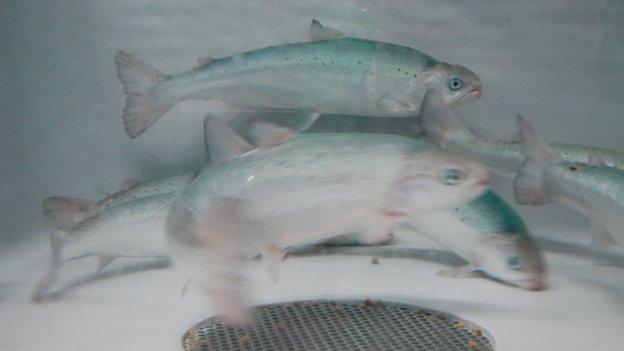
Ways to tackle loused salmon have had to evolve
In the past, medicines have been added to the food the fish eat, but recently lice have become resistant to the chemicals. Now Marine Harvest is trying to keep down the sea lice by introducing to the pens feeder fish, which naturally eat the sea lice off the salmon.
As well as 100 sites in Norway that Marine Harvest operates, the company farms salmon in Scotland, Canada, Chile and Ireland. Chief operating officer for farming, Marit Solberg, agrees that the sea lice problem does need to be solved, but believes we have no choice but to find ways to farm more in the oceans.
"There is so little produced in the sea - only 2% of food production globally. We have to farm more fish. We are used to farming animals on land and consumers accept that. I am sure up to 70 or 80% of food could come from the sea in future."
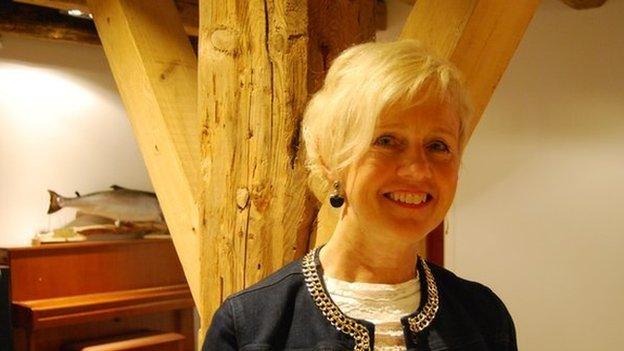
Marine Harvest's Marit Solberg says consumers accept farming animals on land so why not fish?
Destroying stocks
The scientists responsible for monitoring the number of wild fish in the seas agree that wild fish alone cannot sustain the world's fast-growing population.
Harald Gjosaeter, chief scientist at Norway's Institute of Marine Research, has been involved in researching wild fish stocks for more than 30 years.
While some wild fish stocks - such as cod in the Barents Sea - are at record high levels not seen since the end of World War Two, Harald has concerns for the long-term future of wild stocks.
"You can't fish the last mackerel and you can't fish the last cod," he says. "But you can destroy the stock. You can make it become so small that it won't produce enough food for humans. And that has happened to many stocks around the world."
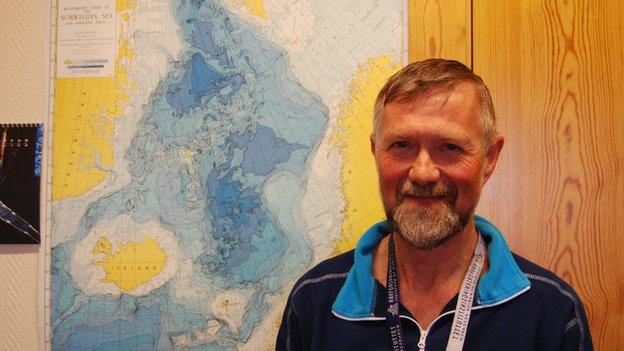
Harald Gjosaeter also advises the Norwegian government
But Elling Lorentzen, a senior adviser at the Norwegian Fishermen's Association, firmly believes that there are enough fish in the sea to secure the future of wild fishing, as long as they operate according to new practices.
"You have to think differently than you did 40 or 50 years ago," he says. "Fishing is now more efficient and you are able to catch your quota in a shorter time than before.
"So if you take quality as the main purpose - not volume - then you will take more time to catch the fish. And then you have enough stock to fish throughout the years with the fleet we have today."

Norway: Wild fishing v farmed fishing
Around 100,000 fewer fishermen now go out to sea than in the 1940s
There are now just over 6,000 registered fishing vessels in Norway - down from 13,000 at the start of the century
Fish products are Norway's second largest source of exports - after oil and gas - worth more than $9bn (£6bn) a year
About 95% of Norwegian aquaculture production is exported
In 2014, Norwegian vessels delivered 2.3 million tonnes of fish, crustaceans and molluscs
'An example'

Christopher Haatuft has developed a type of cuisine he semi-ironically calls "neo-fjoridic"
Christopher Haatuft runs a high-end seafood restaurant in Bergen. He buys his shellfish from Knut and his daughter.
He is part of a new wave of food culture being developed in Norway - where top chefs are keen to diversify away from farmed fish.
Christopher aims to make use of everything the sea has to offer, including wild fish, all types of shellfish and even seaweed.
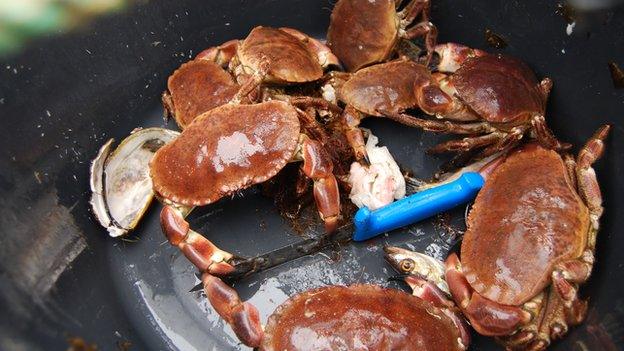
Crabs caught by Knut end up in Christopher's restaurant
"I want to be an example of how a seafood restaurant can be in Norway - not what the market wants it to be," he says. "They want me to showcase salmon - if I did I would make a lot more money, I would be a lot more profitable and would be a lot more in tune with the rest of the seafood industry."
But he wants the money he spends on sourcing seafood for his restaurant to help regenerate small-scale fishing in Norway.
As he arrives back at the restaurant with his catch, fresh from Knut's net, he hands over the still wriggling basket of crabs to one of his sous-chefs - ready to serve up in a couple of hours straight from the Norwegian fjords.
For more on this story, listen to The Food Chain on iPlayer or download the podcast.
- Published7 May 2015
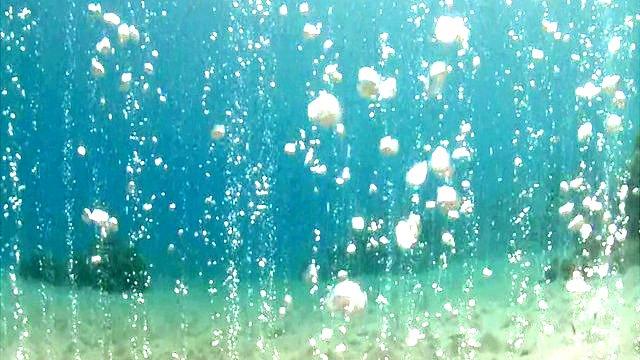
- Published22 April 2015
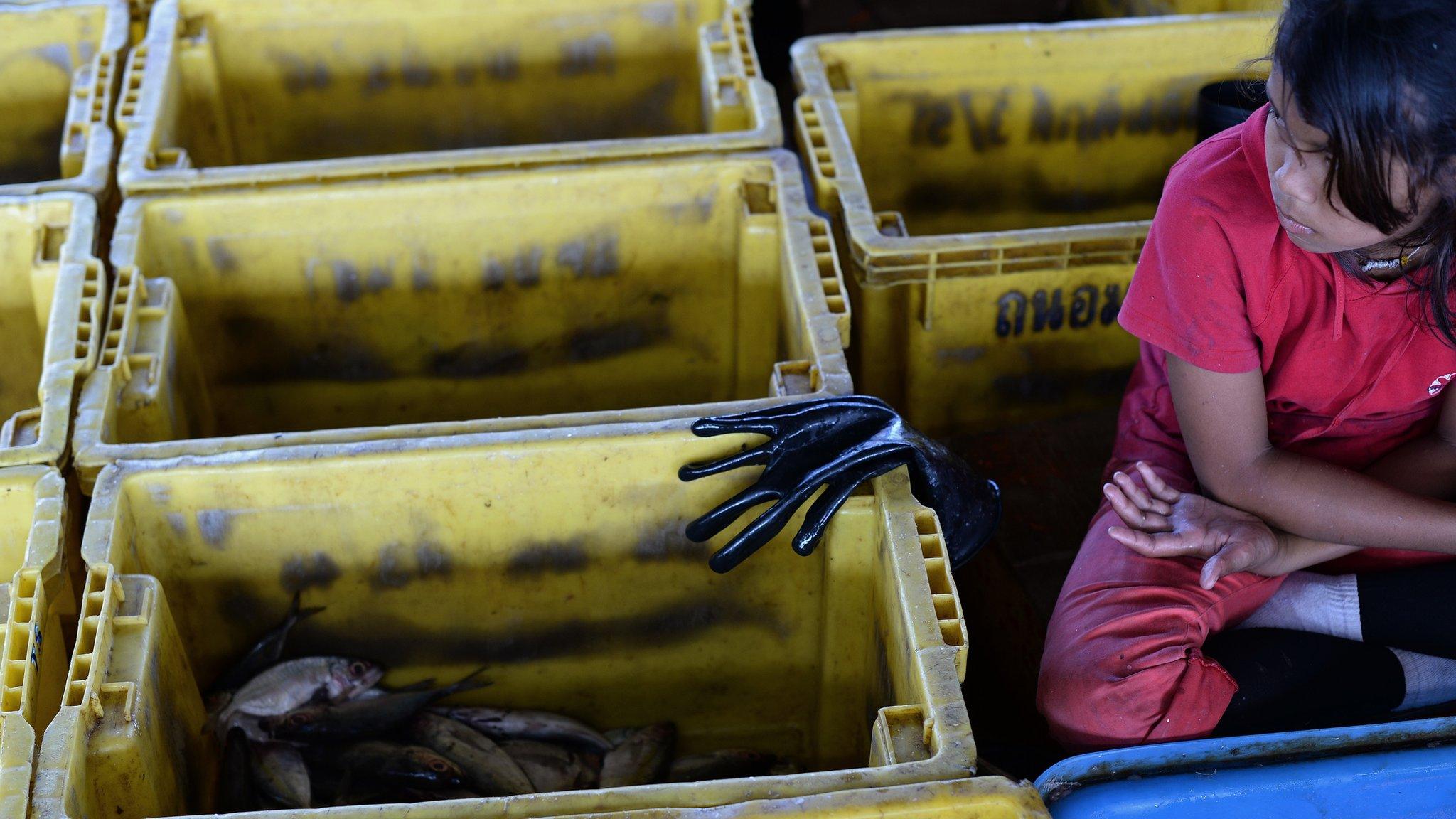
- Published13 April 2015

- Published16 July 2014
